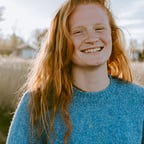ART MACHINES ReCoding: Driessens & Verstappen
A recap of ART MACHINES ReCoding: Driessens & Verstappen in August 2020. Written by participant: Joost Dofferhoff (Intern for our partner LIMA).
On the 15th and 16th of August, the industrial creative hotspot De Havenloods in Utrecht was home to a workshop on generative art. It featured the works of the artist duo Erwin Driessens and Maria Verstappen, who were also present during the weekend. The workshop, which was hosted by Fabian van Sluijs of Creative Coding Utrecht, focused on two particular concepts found in two different artworks created by the duo. These concepts were focused on because they frequently return in the work of the artists. One of these concepts is the mathematical concept of the cellular automata, made famous by John Conway’s Game of Life. Simply explained, it entails a simulation of how a single entity changes based on its relation to its neighbors. This relation can mean that the entity can create new entities or remove old ones which in turn can create interesting patterns and movements.
Driessens and Verstappen are two artists who have already been together for almost forty years. Studying traditional sculpture art together in the art school of Maastricht in the ’80s the duo quickly got interested in working with digital tools, even though the school only had a single computer. Continuing their studies at the Rijksakademie in Amsterdam, studying art media studies, the duo developed an interest in creating artworks that are not pre-programmed, meaning art that consists of starting something and watching what the result will be. They call their processes generative and decentralized, meaning a bottom-up approach to art in which processes and results mirror each other. Two of their artworks, Breed (1995–2007) and E-volver (2006), were central to the weekend’s workshop.
Driessens and Verstappen’s work Breed (1995–2007) employed this concept to create virtual three-dimensional objects that were later materialized on 3D-printers. Because this project spanned over a decade it also showed how the technology of 3D printing changed over the years. In the early days of the project, the duo printed the object in metal but because the technology was relatively new, the color of the metal changed over time and gave the objects a beautiful patina. Considered by the printers to be a mistake, the ‘wrong’ colours are now considered a beautiful aspect of the work and something that can never be recreated because the technology does not make that mistake anymore.
The second artwork that formed the inspiration for the workshop was the work E-volver (2006) which was specifically created for the Research Labs of the LUMC in Leiden. This work, which consists of four breeding units located in the building, ask for constant interaction from the people who work in the Research Labs. This is also the reason why this work is almost never exhibited elsewhere, because without constant interaction and care the work does not speak as well as it should. The concept this artwork revolves around is artificial evolution, meaning a kind of evolution that is forced by human hands. By allowing the user to choose which one of the four parts of the artwork they dislike they can delete it while giving the other three parts a more artificial life. Whatever part has more life at the end of the first stage will return in the coming stages and survive. The artist duo told the guests at the workshop that they found it interesting that this artwork causes people to work towards a common consensus, meaning that people delete the parts that stand out from the rest to make the artwork in its whole an aesthetic whole.
After the introduction to the concepts of generation and the artworks, it was now our turn to apply these concepts and create our own project. The first round of ideas concluded that many people’s imaginations were sparked and many fascination projects were starting to happen. From ideas involving sensors placed on dancers in order for their movements to control the evolution of the cellular automaton to ideas that involved the Kinect camera to use the movements of people passing by the artwork to control the generating of the artwork. Others took a more virtual approach and build programs that were simulating cellular automaton that resembled objects in nature, such as the growing patterns of plants or finding a way to visualize the fields of force that are at work between the rotations of planets.
The second day of the workshop started where the last one finished with people promptly going back to work. The projects, that were mere ideas the day before, begin to take shape and start to become visible in the workshop space. A projection aimed at a wall shows the people in the room, being noticed by the Kinect, turning into a generative figure live before their eyes. Another nice thing to see during the workshop was the help being offered to others. Where some candidates had a lot of experience in coding and making artworks, it was the first time for others. However, even though frustration is always present when it comes to coding, this frustration did not last long for the candidates as anyone could count on anyone to give their advice and insights and in some cases even hands-on help with some of the coding work.
The workshop ended with all the people going around each other’s workstations to see the current state of the project they had been working on. After making the rounds it was clear that people were building towards spectacular artworks and all were encouraged to continue working on it. The workshop was not just a one-time event; the projects built during will be continued and presented in an exposition at Studio Kapitaal as part of Ars Electronica, made possible by HKU, on September the 11th.
ART MACHINES is made possible by the help of Stimuleringsfonds Creatieve Industrie.
